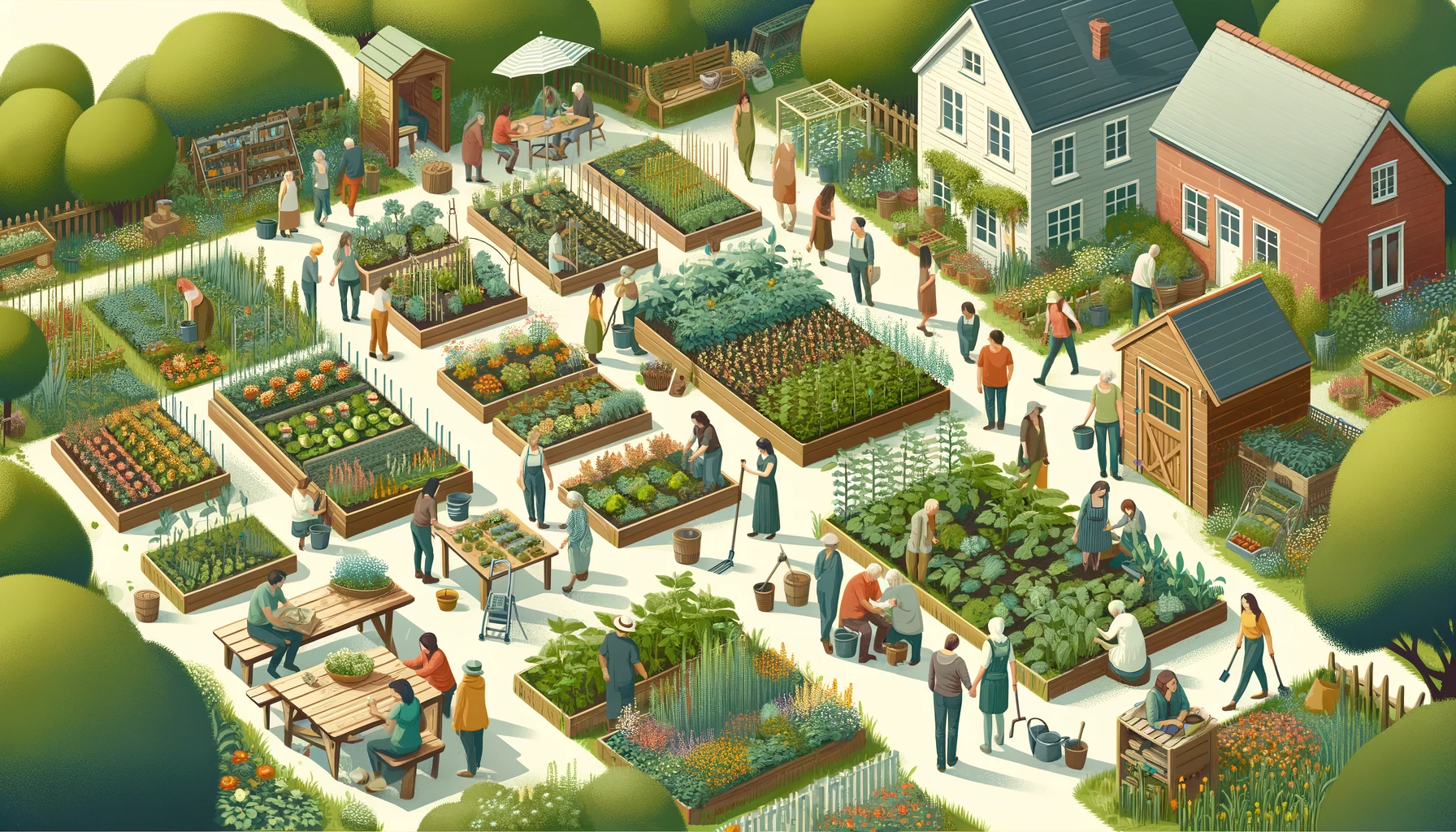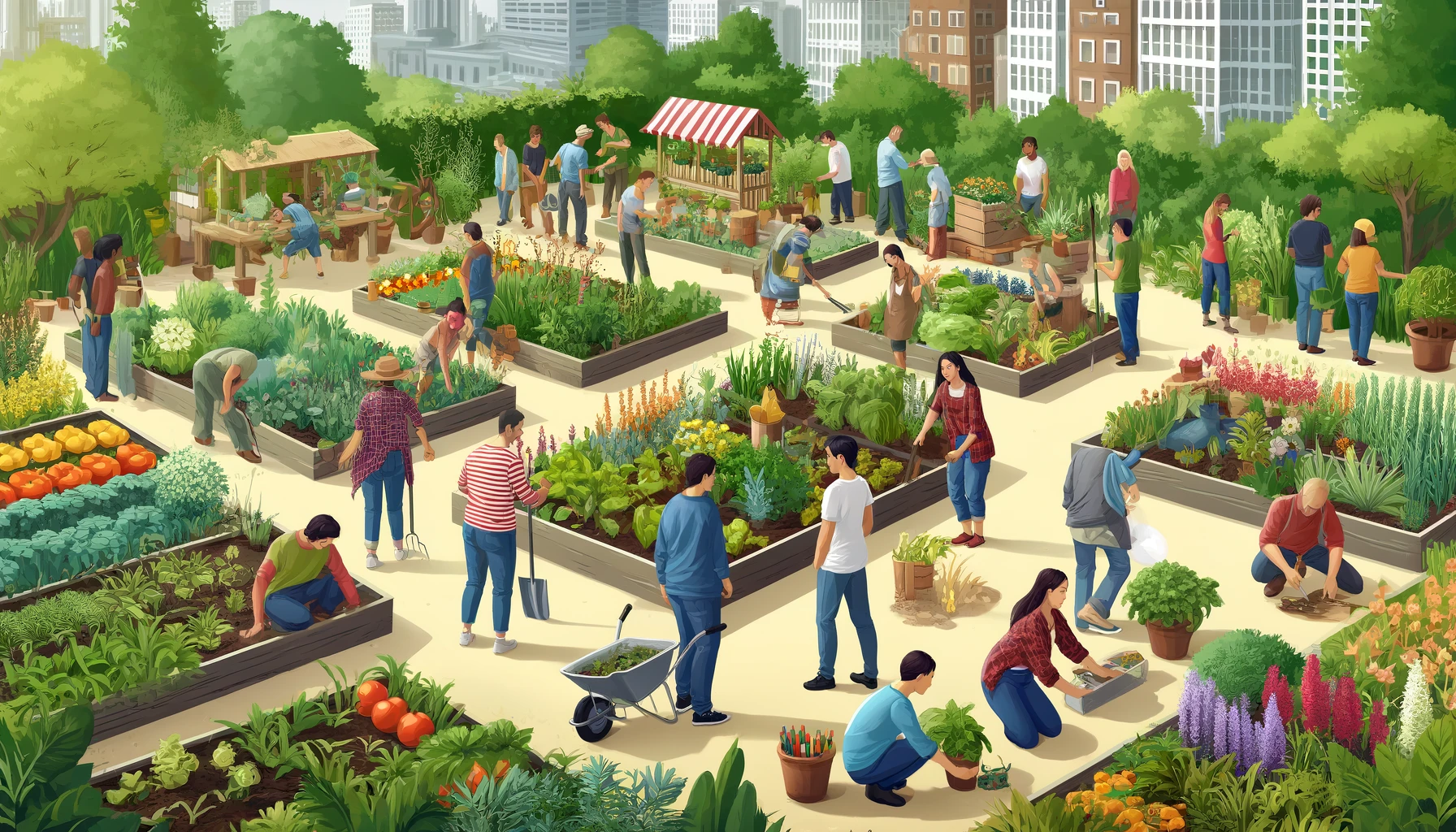We use affiliate links. If you purchase something using one of these links, we may receive compensation or commission.
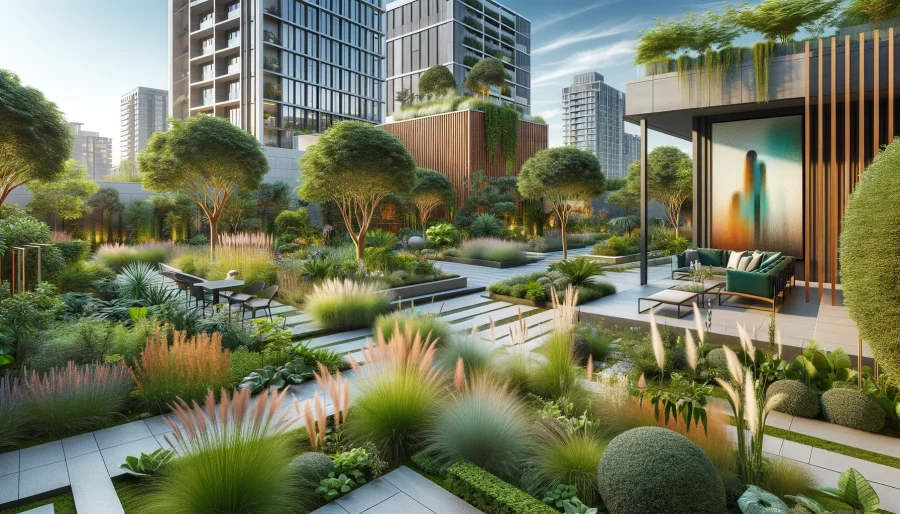
Explore the world of urban garden design and aesthetics! Learn how to transform city spaces into green havens that enhance beauty, functionality, and sustainability.
Urban Garden Design and Aesthetics
Key Takeaways:
- Urban Garden Design and Aesthetics focus on creating beautiful and functional outdoor spaces in urban environments.
- It involves selecting the right plants, incorporating sustainable practices, and using design elements like color and texture to enhance the visual appeal and livability of city areas.
Welcome to the vibrant world of urban garden design and aesthetics!
In this guide, we’ll dive into the art of creating stunning and sustainable green spaces that breathe life into urban environments.
Discover the key design elements, styles, and benefits of designing your very own urban oasis.
Urban Garden Design and Aesthetics
Urban garden design is a growing trend that transforms urban spaces into green havens.
From plant selection to lighting and water features, urban garden design encompasses various elements to create beautiful outdoor spaces.
It’s not just about aesthetics – urban garden design also offers numerous benefits to the community and the environment.
We will explore the importance of urban garden design, the different styles available, and how to create your own urban oasis.
Let’s dive in and discover the beauty and functionality of urban garden design!
What is Urban Garden Design?
Urban Garden Design combines artistic vision with practical considerations to create outdoor spaces that enhance the beauty and functionality of urban areas.
When designing urban gardens, the fusion of aesthetics and functionality is crucial.
It’s about harmonizing greenery, hardscape elements, and structures to not only look visually appealing but also serve a purpose.
Key design principles such as sustainability, space optimization, and accessibility come into play.
Incorporating native plants and efficient irrigation systems are common practices to ensure sustainability and reduce maintenance needs.
Evaluating the available space is vital in urban settings where every inch counts, helping to maximize the garden’s potential.
Aesthetic appeal is not just about visual charm but also about creating a welcoming oasis amid a bustling city.
Urban horticulture is the science and study of the growing plants in an urban environment. It focuses on the functional use of horticulture so as to maintain and improve the surrounding urban area. Urban horticulture has seen an increase in attention with the global trend of urbanization and works to study the harvest, aesthetic, architectural, recreational and psychological purposes and effects of plants in urban environments. https://en.wikipedia.org/wiki/Urban_horticulture
Why is Urban Garden Design Important?
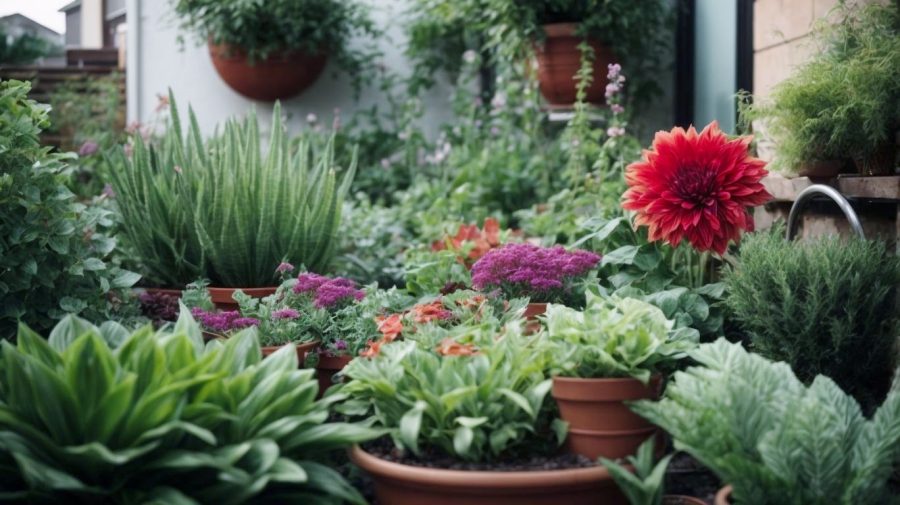
Urban Garden Design plays a vital role in transforming urban spaces into vibrant, green oases that provide visual appeal, enhance livability, and promote sustainability.
By strategically integrating green spaces within cities, Urban Garden Design not only beautifies the concrete jungle but also improves air quality by absorbing pollutants and releasing oxygen.
The presence of greenery has been linked to reduced stress levels and increased well-being among urban dwellers, making cities more enjoyable places to live.
Design principles such as maximizing vertical space, utilizing native plants, and incorporating sustainable irrigation systems all play a part in creating gardens that are not only visually stunning but also environmentally friendly and efficient.
How Does Urban Garden Design Benefit the Community?
Urban Garden Design benefits the community by fostering a sense of community engagement, promoting urban agriculture initiatives, enhancing aesthetic appeal, and contributing to sustainable urban landscaping.
Through Urban Garden Design, community engagement is strengthened as individuals come together to create and maintain green spaces that everyone can enjoy.
These spaces not only provide a platform for social interaction and collaboration but also serve as educational hubs for urban agriculture initiatives.
By incorporating sustainable landscaping practices, such as rainwater harvesting and native plantings, urban gardens help reduce environmental impact and create healthier, more resilient communities.
What are the Environmental Benefits of Urban Garden Design?
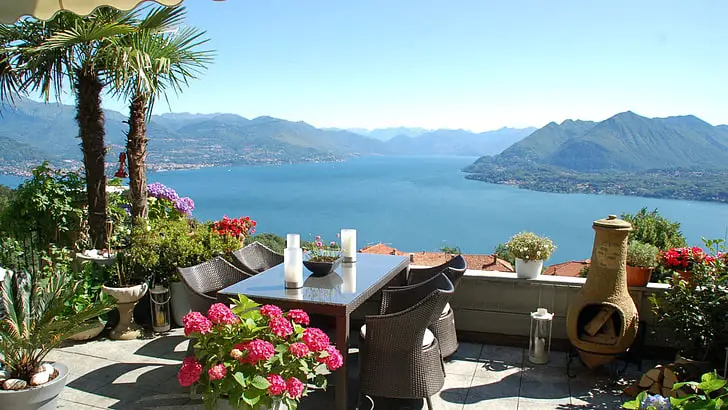
Urban Garden Design offers numerous environmental benefits through plant selection, rainwater harvesting architecture, and supporting local manufacturing with products made in the USA.
In terms of plant selection for sustainability in Urban Garden Design, choosing native species is key.
Native plants are inherently adapted to the local climate, soil, and pests, requiring less water, fertilizer, and pesticides.
This not only conserves natural resources but also helps maintain biodiversity by providing habitats for local wildlife.
Incorporating rainwater harvesting architecture into urban gardens is another crucial aspect of water conservation.
Systems like rain barrels, cisterns, and permeable surfaces help capture and store rainwater, reducing the strain on municipal water supplies and minimizing stormwater runoff, which can carry pollutants into waterways.
Promoting local manufacturing with products Made in the USA supports the economy and reduces the carbon footprint associated with transportation.
Utilizing locally sourced materials and products decreases emissions from long-distance transportation, contributing to lower greenhouse gas emissions and fostering a more sustainable urban environment.
What are the Elements of Urban Garden Design?
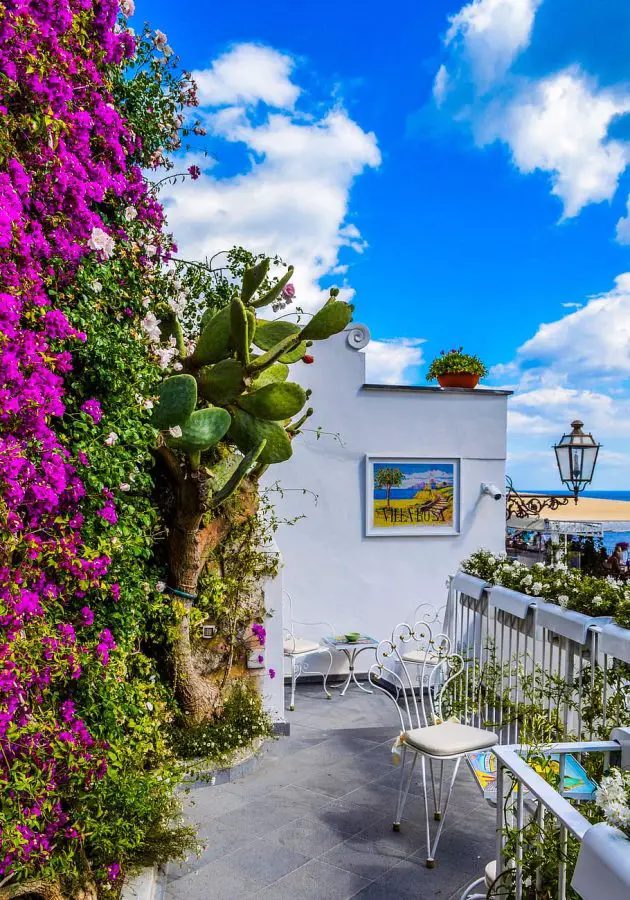
The Elements of Urban Garden Design encompass plant selection, strategic furniture placement, creative lighting choices, and the incorporation of water features to create harmonious outdoor spaces.
Plant selection in urban garden design is crucial for creating a diverse and vibrant outdoor space.
It involves choosing a mix of plants that thrive in the local climate and complement each other in terms of color, texture, and height.
By incorporating a variety of plants such as flowering perennials, evergreen shrubs, and ornamental grasses, you can achieve a visually appealing garden that blooms throughout the seasons.
In terms of furniture placement, functionality is key. Consider how you will use the outdoor space and arrange furniture to maximize comfort and usability.
From cozy seating areas for relaxation to dining sets for al fresco meals, each piece should serve a purpose while also enhancing the overall aesthetics of the garden.
Lighting plays a vital role in setting the ambiance of an urban garden.
Whether it’s string lights draped overhead, lanterns scattered along pathways, or spotlights highlighting focal points, the right lighting can transform the space from day to night.
By layering different types of lighting, you can create a warm and inviting atmosphere that extends the enjoyment of the garden after dark.
Water features add an element of tranquility and visual interest to urban garden design.
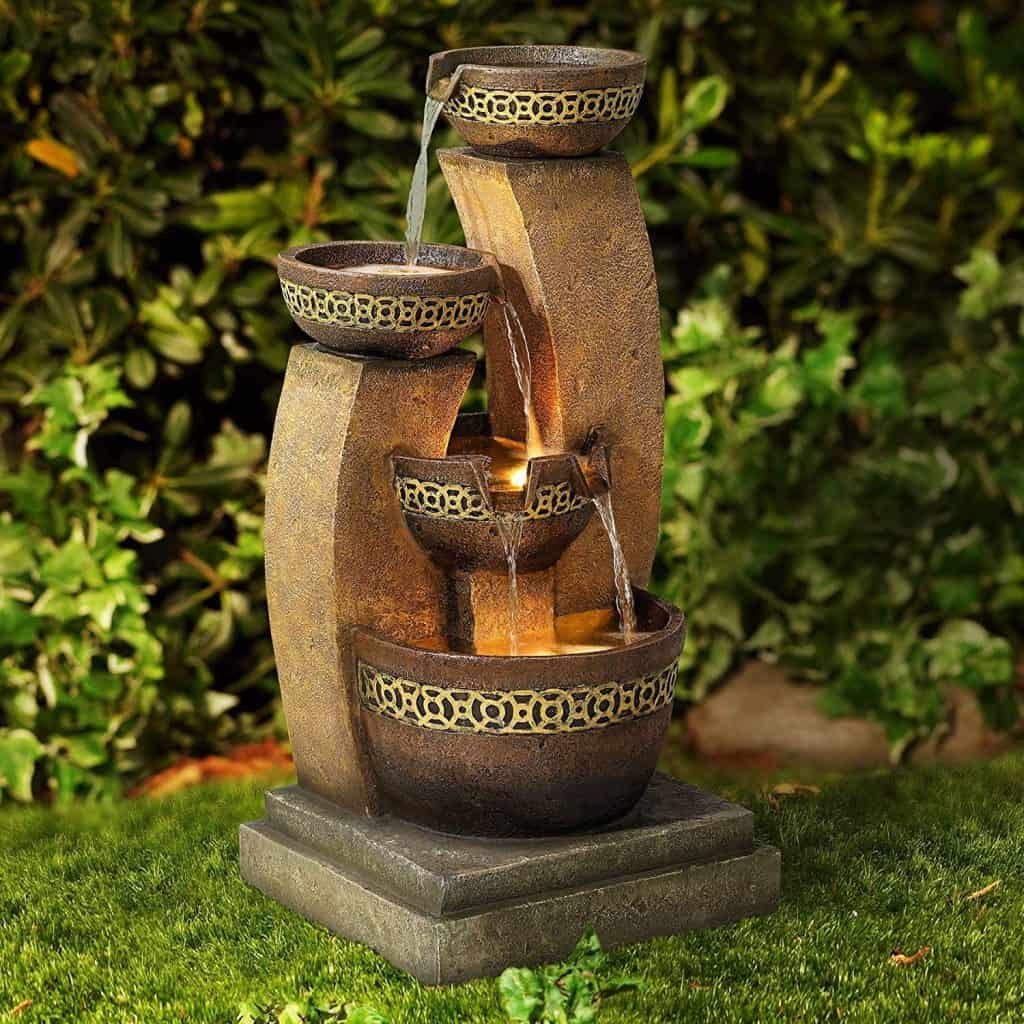
A bubbling fountain, a reflecting pool, or a small pond can create a sense of serenity amidst the hustle and bustle of city life.
Incorporating water features not only attracts birds and wildlife but also provides a soothing backdrop of sound and movement that enhances the overall sensory experience of the garden.
Plant Selection
Plant Selection in urban gardens is a crucial aspect that involves choosing suitable plants for the local climate, and soil conditions, and supporting urban agriculture initiatives.
When designing an urban garden, selecting the right plants not only enhances the aesthetic appeal but also plays a significant role in the garden’s overall success.
Climate suitability is crucial as it ensures that the chosen plants can thrive in the specific weather conditions of the urban environment.
Understanding the soil conditions is equally important, as it directly affects the plants’ growth and health.
By selecting plants that support urban agriculture efforts and urban gardens can contribute to local sustainable food production and community well-being.
Hardscaping
Hardscaping in urban garden design involves the strategic placement of non-plant elements like paths, walls, and structures to complement the overall aesthetic and enhance usability.
These hardscape elements play a crucial role in defining the structure and organization of a space, providing a solid foundation for the various plantings that will be integrated into the design.
By incorporating features such as patios, decks, or pergolas, urban gardens can offer versatile outdoor living areas that blur the line between indoor and outdoor spaces.
Hardscaping elements like retaining walls not only add dimension and interest to the design but also serve functional purposes such as providing seating or creating terraced planting areas.
Lighting
Lighting plays a crucial role in urban garden design by creating ambiance, highlighting focal points, ensuring safety, and extending the usability of outdoor spaces beyond daylight hours.
Well-thought-out lighting design not only enhances the beauty of the garden but also plays a significant role in defining the overall mood and atmosphere.
Strategically placed lights can draw attention to specific plants, sculptures, or architectural elements, adding depth and visual interest to the space.
Lighting also contributes to the safety of the garden by illuminating pathways, stairs, and potential hazards, allowing visitors to navigate the space comfortably and securely, even after sunset.
The proper application of key design principles, such as balance, proportion, and harmony, can further elevate the outdoor experience, creating a cohesive and visually captivating environment that can be enjoyed both day and night.
Water Features
Water features such as fountains, ponds, and waterfalls add a dynamic element to urban garden design, creating soothing sounds, and visual interest, and promoting biodiversity.
Water features play a crucial role in enhancing the overall ambiance of urban gardens.
Not only do they provide a sense of tranquility with their calming sounds, but they also serve as focal points that draw the eye and create a sense of movement within the space.
Integrating water elements into garden design can attract a variety of wildlife, from birds to insects, enriching the ecosystem and fostering a healthier environment.
By following key design principles such as scale, balance, and proportion, designers can ensure that water features seamlessly blend with the surrounding landscape, resulting in a harmonious and visually appealing outdoor setting.
What are the Different Styles of Urban Garden Design?
Urban Garden Design encompasses various styles, including Modern, Cottage, Mediterranean, and Japanese, each offering unique design principles and aesthetics tailored to different urban spaces.
Modern Urban Garden Design

Modern urban garden design typically features clean lines, minimalistic elements, and a focus on functionality.
Incorporating sleek materials like metal and concrete, modern gardens often use geometric shapes and bold colors to create a contemporary feel.
Cottage Style Gardens
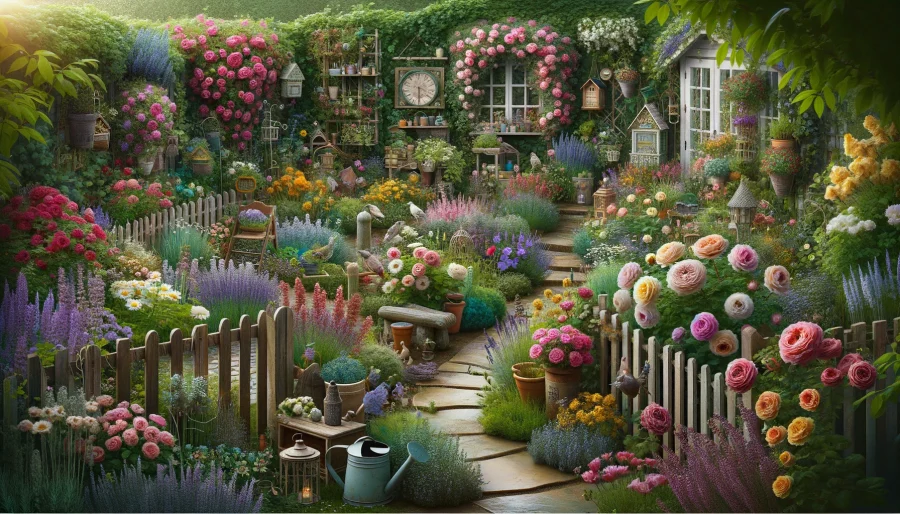
Cottage style, on the other hand, embraces a more relaxed and romantic atmosphere with an abundance of flowers, whimsical pathways, and cozy seating areas.
This style often integrates vintage or repurposed elements to evoke a charming, lived-in look.
Mediterranean Gardens
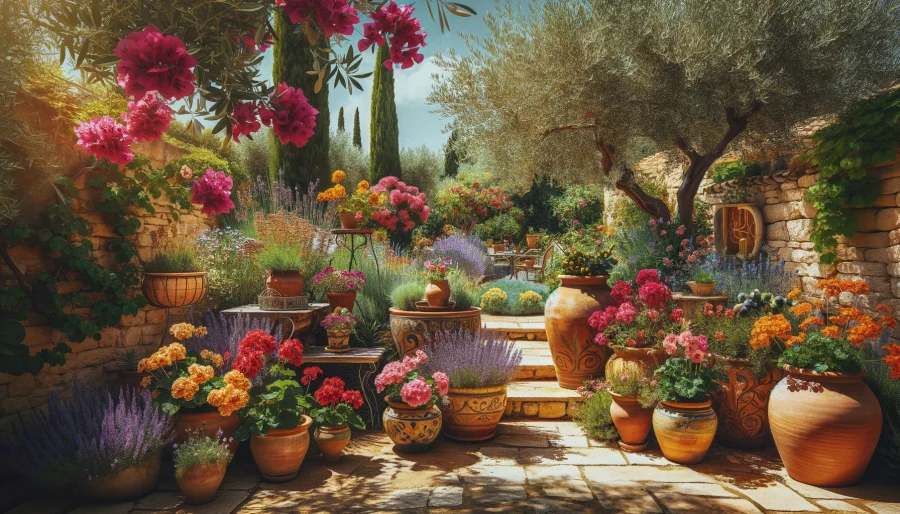
Mediterranean gardens draw inspiration from the sunny regions of Southern Europe, incorporating elements such as terracotta pots, lush greenery, and water features.
The use of vibrant colors, fragrant herbs, and tiled accents creates a warm and inviting ambiance.
Japanese Garden Design

Japanese garden design focuses on creating tranquil and Zen-inspired spaces, characterized by simplicity, natural materials like wood and stone, and carefully placed elements such as rocks, sand, and water features.
These gardens often aim to evoke a sense of harmony and serenity.
Modern
The Modern style of urban garden design focuses on minimalism, sleek lines, and contemporary elements to create a sophisticated outdoor space that complements modern urban environments.
It is characterized by clean, simple designs that prioritize functionality and aesthetic appeal.
This style often incorporates elements such as geometric shapes, neutral color palettes, and sustainable materials to achieve a sleek and polished look.
Modern urban gardens are designed to maximize space efficiency, with features like built-in seating areas, vertical gardening solutions, and innovative lighting schemes.
Cottage
The Cottage style of urban garden design exudes a charming, relaxed ambiance with abundant flowers, lush greenery, and vintage-inspired elements that evoke a sense of rustic beauty and nostalgic appeal.
This design aesthetic draws inspiration from traditional English country gardens, embracing a mix of wildflowers, climbing roses, and fragrant herbs that create a whimsical and romantic atmosphere.
Soft pastel hues dominate the color palette, enhancing the serene and inviting feel of the space.
Utilizing salvaged items like weathered wooden benches, wrought iron gates, and vintage planters adds a touch of history and character to the garden.
The Cottage style is known for its informal layout, where pathways meander through blooming borders, leading to cozy seating areas tucked amidst the greenery.
Mediterranean
The Mediterranean style of urban garden design captures the essence of the Mediterranean region with its use of vibrant colors, natural materials, and lush vegetation that evoke a sense of warmth, elegance, and visual appeal.
- These gardens typically feature a harmonious blend of terracotta pots, wrought iron furniture, and stone pathways, reflecting the authentic charm of Mediterranean landscapes.
- The use of vibrant hues such as cobalt blues, sunny yellows, and earthy terracottas adds a pop of color against the backdrop of greenery, creating a lively and inviting atmosphere.
- The strategic placement of fragrant herbs like lavender and rosemary not only enhances the sensory experience but also contributes to the overall aesthetic by infusing the garden with delightful scents.
Japanese
The Japanese style of urban garden design embodies simplicity, harmony, and Zen principles, featuring minimalistic elements, serene landscapes, and carefully curated plantings that evoke a sense of tranquility and aesthetic sophistication.
Central to the Japanese urban garden style is the concept of incorporating natural elements in a mindful and deliberate manner.
The utilization of stone, gravel, and water features, such as koi ponds or bamboo fountains, adds a sense of serenity and fluidity to the overall design.
Balance is a key principle in creating these outdoor spaces, with a focus on equalizing visual elements to evoke a feeling of harmony.
This equilibrium extends to the careful placement of plants, stones, and other decor, ensuring a peaceful and cohesive atmosphere.
How to Create an Urban Garden Design?
Creating an Urban Garden Design involves assessing the available space, considering local climate conditions, choosing a design style, and incorporating sustainable practices for long-term environmental impact.
When evaluating the available space for your urban garden, take into account factors such as sunlight exposure, soil quality, and existing structures.
This assessment will help determine the types of plants that will thrive in your garden.
Considering the local climate conditions is crucial to selecting plant varieties that can withstand the temperature fluctuations and precipitation levels in your area.
Understanding the microclimates within your urban setting will also guide your plant choices.
Choosing a design style that complements your urban environment is essential.
Whether you opt for a modern, minimalist look or a lush, cottage garden style, the design should reflect your personal taste and blend harmoniously with the surrounding architecture.
Integrating sustainable practices into your urban garden design is not only environmentally responsible but also contributes to the health of your ecosystem.
Utilize composting, rainwater harvesting, and native plantings to minimize water usage and promote biodiversity.
Assess the Space
Assessing the space for an urban garden design involves evaluating the size, orientation, existing features, and potential challenges to optimize the layout and functionality of the outdoor area.
When determining the size of the space, considering the dimensions and boundaries is crucial in fitting the design elements harmoniously.
Orientation plays a vital role in determining sunlight exposure for plants and seating areas.
Existing features like trees or structures can be integrated into the design, enhancing the overall appeal.
Identifying and addressing potential challenges such as limited access or uneven terrain is essential for a successful garden layout.
Consider the Climate
Considering the climate is essential in urban garden design to select suitable plants, plan for seasonal variations, and implement strategies that enhance plant growth and resilience in different weather conditions.
When choosing plants for an urban garden, climate suitability plays a crucial role in ensuring their successful growth and development.
By opting for species that are well-adapted to the local climate and soil conditions, gardeners can create a more sustainable and thriving garden ecosystem.
Seasonal planning is equally important, as it enables gardeners to anticipate and prepare for changing weather patterns, ensuring that their plants receive the necessary care and protection throughout the year.
Implementing strategies to support plant health and resilience can help mitigate the impact of extreme weather events, such as providing adequate water and nutrients, as well as using mulch and shade structures to protect plants from harsh conditions.
Choose a Style
Choosing a design style for an urban garden involves selecting from various aesthetic themes, functional layouts, and design principles that suit the space requirements and aesthetic preferences of small urban gardens.
One key consideration when designing an urban garden is to ensure that the chosen aesthetic theme complements the existing surroundings.
A popular choice for small urban spaces is the minimalist theme, characterized by clean lines and simplicity, creating a sense of openness and tranquility.
Incorporating vertical gardening techniques can optimize limited space, making use of walls or fences for planting.
This not only adds a visual element but also maximizes greenery without encroaching on valuable floor space.
Incorporate Sustainable Practices
Incorporating sustainable practices in urban garden design includes using eco-friendly materials, implementing water-saving techniques like rainwater harvesting architecture, and promoting biodiversity to create environmentally conscious outdoor spaces.
When designing an urban garden with sustainability in mind, choosing eco-friendly materials is crucial.
Opt for materials such as recycled wood, reclaimed stone, or bamboo, which have minimal impact on the environment.
These materials not only reduce waste but also add a natural aesthetic to the garden.
- Water conservation is another key aspect to consider. Implementing rainwater harvesting systems can help collect rainwater for irrigation purposes, reducing dependency on mains water supply and lowering water bills.
- Promoting biodiversity by incorporating a variety of plants native to the region attracts pollinators, birds, and beneficial insects, creating a self-sustaining ecosystem within the garden.
By integrating these sustainable practices, urban gardens can serve as green oases that support the environment and provide a peaceful retreat for city dwellers.
What are the Aesthetics of Urban Garden Design?
The Aesthetics of Urban Garden Design encompass color schemes, textural variety, sculptural forms, and the careful consideration of scale and proportion to create visually captivating and harmonious outdoor spaces.
When designing an urban garden, the color schemes play a crucial role in setting the mood and visual appeal of the space.
A well-thought-out color palette can evoke different emotions and create dynamic contrasts or soothing harmonies.
Combining various textures, such as soft foliage, rough bark, or smooth stones, adds depth and interest to the garden.
The use of different forms, from tall vertical elements to low groundcovers, creates visual interest and enhances the overall design.
Scale and proportion are fundamental in ensuring that elements within the garden are balanced and harmoniously integrated.
Color
Color plays a crucial role in urban garden design by setting the mood, creating focal points, establishing visual coherence, and enhancing the overall aesthetic appeal of outdoor spaces.
In terms of setting the mood in urban gardens, color selection can evoke different emotions and feelings.
Warm tones like reds, oranges, and yellows can create a vibrant and energetic atmosphere, while cooler hues such as blues and greens promote a sense of tranquility and relaxation.
By strategically placing these colors throughout the garden, designers can guide visitors on a visual journey, leading their eyes to key focal points such as striking blooms, architectural elements, or seating areas.
Color plays a crucial role in establishing visual coherence within the garden.
By repeating certain hues or using complementary color schemes, designers can create a sense of unity and harmony throughout the space.
This consistency helps tie together diverse elements like plants, hardscape materials, and decorative accents, resulting in a more cohesive and visually appealing design.
Texture
Texture adds depth and tactile interest to urban garden design, creating visual contrasts, enriching plant compositions, and offering sensory experiences that enhance the overall aesthetic appeal of outdoor spaces.
When considering garden design, texture plays a crucial role in transforming a mundane outdoor area into a visually captivating and dynamic landscape.
By incorporating a variety of textures, such as smooth leaves next to rough bark or fine foliage juxtaposed with coarse rocks, designers can create a sense of balance and harmony that pleases the eye.
Texture not only affects the visual aspect of a garden but also contributes to plant diversity.
Different textures can attract a wide range of fauna and flora, promoting biodiversity and creating a more ecologically friendly environment.
Along with its visual and ecological benefits, texture also adds a sensory dimension to the garden.
Imagine running your hands over the velvety surface of lamb’s ear plants or brushing past the spiky leaves of a succulent.
These tactile experiences engage our senses, making the outdoor space more inviting and immersive.
Form
Form influences the visual structure and organization of urban garden design, shaping pathways, architectural elements, plant arrangements, and overall spatial composition to create aesthetic coherence and visual interest.
When considering form in urban garden design, it’s crucial to understand how different shapes, angles, and structures can influence the overall feel of the space.
For instance, using curves in pathways can create a sense of flow and movement, while straight lines may evoke a more formal and structured ambiance.
Architectural elements such as pergolas, arbors, and seating areas play a pivotal role in defining the garden’s character.
They not only provide functional spaces but also serve as focal points that guide visitors through the garden.
The layout of plants is another aspect where form comes into play.
By strategically placing plants of varying heights, textures, and colors, designers can create visual interest and depth within the garden, enhancing its overall appeal.
Scale and Proportion
Scale and proportion are essential considerations in urban garden design for creating balanced compositions, harmonious relationships between elements, and a cohesive visual appeal that enhances the overall aesthetics of outdoor spaces.
In terms of urban garden design, understanding the interplay between scale and proportion is like mastering the art of creating a beautiful symphony with plants, structures, and pathways.
The scale refers to the size of individual elements within the garden, while proportion deals with the relationship between these elements and the overall space.
By carefully balancing these aspects, designers can ensure that every component fits harmoniously into the landscape, preventing overwhelming or underwhelming effects.
Urban Garden Design and Aesthetics FAQs
In this section, we’ll address some common questions about urban garden design and aesthetics to help you better understand its significance and how to implement it effectively in urban environments.
Q. What is Urban Garden Design and Aesthetics?
A. Urban Garden Design and Aesthetics involve planning and arranging plants, structures, and other elements in urban areas to create visually appealing and functional garden spaces.
Q. Why is urban garden design and aesthetics important?
A. Urban garden design and aesthetics play a crucial role in enhancing the overall look of a city or urban area and promoting a sense of well-being among its residents.
It also contributes to the sustainability and biodiversity of the urban environment.
Q. How can I incorporate urban garden design and aesthetics in a small space?
A. You can use vertical gardening techniques, such as hanging plants or wall-mounted planters, to maximize the use of space in a small urban garden.
You can also opt for compact and versatile plants and utilize different levels and layers to create a visually interesting and functional garden.
Q. What are some important elements to consider in urban garden design and aesthetics?
A. Some important elements to consider in urban garden design and aesthetics include plant selection, hardscape materials, color scheme, focal points, and the overall layout of the garden.
It is also essential to consider the local climate and conditions to ensure the success of the garden.
Q. How can urban garden design and aesthetics benefit the environment?
A. Urban garden design and aesthetics can benefit the environment by improving air quality, reducing heat island effect, conserving water, and providing habitat for wildlife. It also promotes sustainable practices and helps reduce the carbon footprint of a city.
Q. What are some popular trends in urban garden design and aesthetics?
A. Some popular trends in urban garden design and aesthetics include the use of native and drought-resistant plants, the incorporation of sustainable practices, vertical gardening, and the use of recycled materials.
Creating spaces for relaxation and socializing, such as outdoor seating areas and community gardens, is also a popular trend.
Urban Garden Design and Aesthetics Conclusion
The Essence of Urban Garden Design and Aesthetics
Urban garden design and aesthetics are crucial for crafting beautiful, functional, and sustainable outdoor spaces in urban settings.
By considering elements like plant selection, hardscaping, color, texture, form, and scale, we can create gardens that enhance the visual appeal of urban areas, provide environmental benefits, and promote community well-being.
Embracing Diverse Design Styles
Incorporating various design styles, such as modern, cottage, Mediterranean, and Japanese, allows for a diverse range of aesthetics that cater to different preferences and urban settings.
This diversity enriches the urban landscape and offers residents a sense of escape and tranquility amidst the hustle and bustle of city life.
The Importance of Green Spaces in Urban Areas
As urbanization continues to grow, the integration of green spaces into our cities becomes increasingly vital.
Urban garden design plays a key role in creating livable, vibrant, and eco-friendly urban landscapes that enhance the quality of life for city dwellers.
Learn more: Backyard Gardening: A Comprehensive Guide




